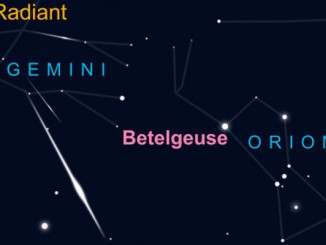
Geminids

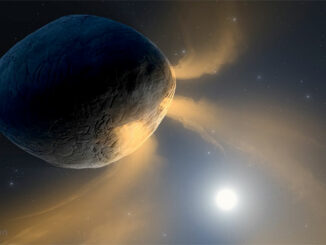
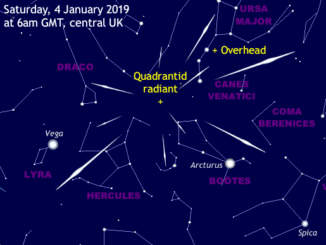
Don’t miss the Quadrantid meteor shower peak at UK dawn on 4 January 2020
For an early astronomical treat to usher in the New Year, seek out the natural pyrotechnics of the rich Quadrantid meteor shower. Peak shooting star activity occurs within a four-hour window centred on a prediction of 8am GMT on 4 January 2020 – a time that favours UK skywatchers at astronomical dawn, or North American observers around local midnight.
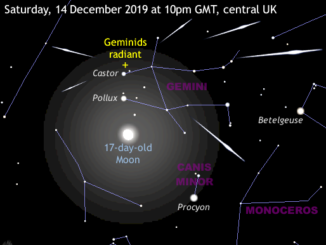
Bright Moon photobombs Geminid meteor shower peak on 14 December
The December Geminid meteor shower is generally regarded as the richest and most reliable of the major annual shooting star displays. This year the predicted peak occurs between 2h and 23h UT (2am to 11pm GMT) on Saturday the 14th, but its bright and slow-moving shooting stars will have to contend with the glare of a nearby Moon just two days after full.

Don’t miss the Geminid meteor shower 13–14 December 2018
The December Geminid meteor shower is generally regarded as the richest and most reliable of the major annual shooting star displays. This year the predicted peak occurs close to 12h UT on 14 December, though high rates of activity should be encountered between 8pm GMT on Thursday, 13 December and 5pm GMT the following evening.
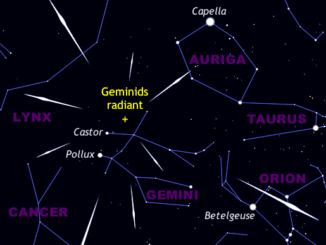
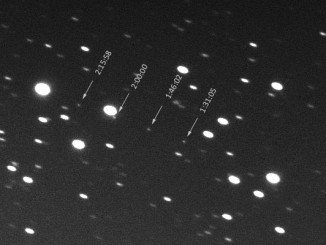
Astronomers recall discovery of Phaethon — source of Geminid meteors
The beautiful Geminid meteor shower is due to light up the heavens this weekend, but the source of the enigmatic cosmic display had eluded stargazers for more than 120 years. Then, in 1983, two University of Leicester astronomers — Dr. Simon Green and Dr. John Davies — used data from the IRAS satellite to discover 3200 Phaethon, an asteroid with a very unusual orbit.
